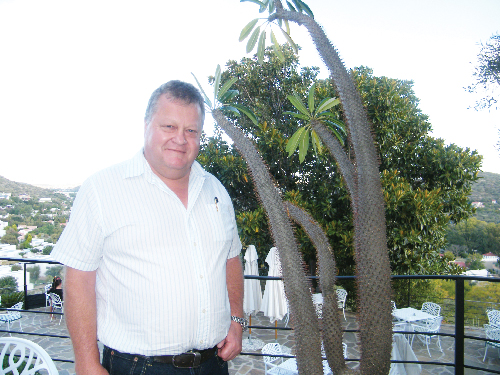
Sandpiper followed due process
 The minerals industry, like all other extractive or displacive industries such as fishing, energy, timber and farming, will always impact on the natural environment in some way. Responsible resource companies seek out the best practices in order to understand, manage and minimise their impact on the environment, and to deliver the greatest benefits for all stakeholders.
The minerals industry, like all other extractive or displacive industries such as fishing, energy, timber and farming, will always impact on the natural environment in some way. Responsible resource companies seek out the best practices in order to understand, manage and minimise their impact on the environment, and to deliver the greatest benefits for all stakeholders.
At Namibian Marine Phosphate (NMP is developing the Sandpiper Marine Phosphate Project (“Sandpiper Project”), we understand and appreciate that the fishing industry is a major employer in Namibia, a country where there are few employment opportunities and the fishing industry is a major contributor to the national economy. We want to ensure that the livelihoods of all our stakeholders and those in the related ocean-based industries are not adversely affected by operations in the Sandpiper Project, while contributing as much as we can to Namibia’s social and economic development.
That is why we have followed the relevant regulatory processes as promulgated by the Namibian government, to complete a comprehensive environmental investigation and to establish an operational management plan. As part of that process we commissioned leading independent specialists with relevant Namibia-based experience and expertise, to complete several key impact assessment studies.
Process and Public Scoping with Interested and Affected Parties
Following publication of advertisements to invite registration of interested and affected parties, a series of public scoping meetings and high level meetings with authorities were held in Windhoek and Walvis Bay in November 2011. A scoping report including feedback from these meetings was compiled, circulated, finalised and submitted to the Ministry of Environment and Tourism (MET) in December 2011. Based on the defined scope, the specialist studies were then completed and the results were incorporated in the draft Environmental Impact Assessment (EIA) and Environmental Management Programme Report (EMPR).
These documents were submitted to MET, Ministry of Mines and Energy (MME), the Ministry of Fisheries and Marine Resources (MFMR) and the public for review and comment during January 2012. After the 15 working-day mandatory review period, the feedback as received was processed, and a further specialist assessment study was completed, which along with the feedback information was incorporated into the Final EIA/EMPR document. This final document was submitted in accordance with the regulations of the Environmental Commissioner on 11 March 2012. Copies of these reports were also submitted to the MME and the MFMR. At the same time a further set of engagements with the authorities and public meetings were held in Windhoek and Walvis Bay. At these meetings the specialist consultants provided feedback on their findings to the attendants.
Expert Opinion on potential impacts to Fishing Industry
Within the Mining License Area (MLA) 170, covering 2 233km2, there are three smaller areas that have been selected as initial areas for development, namely Sand Piper(SP)-1 (8x22km), SP-2 (8x22km) and SP-3 (6 x 11km). Currently all planned activities for the Sandpiper project as proposed for the 20-year plan are located in SP-1 area which represents 8% of the total MLA170 area.
Based on the results of the fisheries specialist investigation, it is concluded that, although the proposed activities of the Sandpiper Project would have some impact on fisheries, this would be moderate to low, and would vary depending on the particular fishing sector.











































